A History of FBOG and Filey Birding
It was the bird collectors in the late 1800s that first discovered the ornithological riches of Filey Brigg. With their eagerness to bag a rarity for the taxidermist’s shop, they came to the Brigg in the hope of finding unusual migrants resting in the area. The first rare bird records for Filey, such as the Steller’s Eider shot in 1845, came as a result of this activity; with the passing of legislation and the passage of time, however, the bird collector was replaced by the birdwatchers or birders of today.
In the early days, birdwatchers would only record the rare or unusual species and, unsurprisingly, very few records were published. The earliest reference to birds at Filey was by Thomas Allis in 1844, when he wrote of Purple Sandpipers on the Brigg:
‘A. Strickland observes that this bird generally confines itself to rocky or stony parts of the shore, and is seldom found on the sand and is met with at Filey and other parts of the coast’.
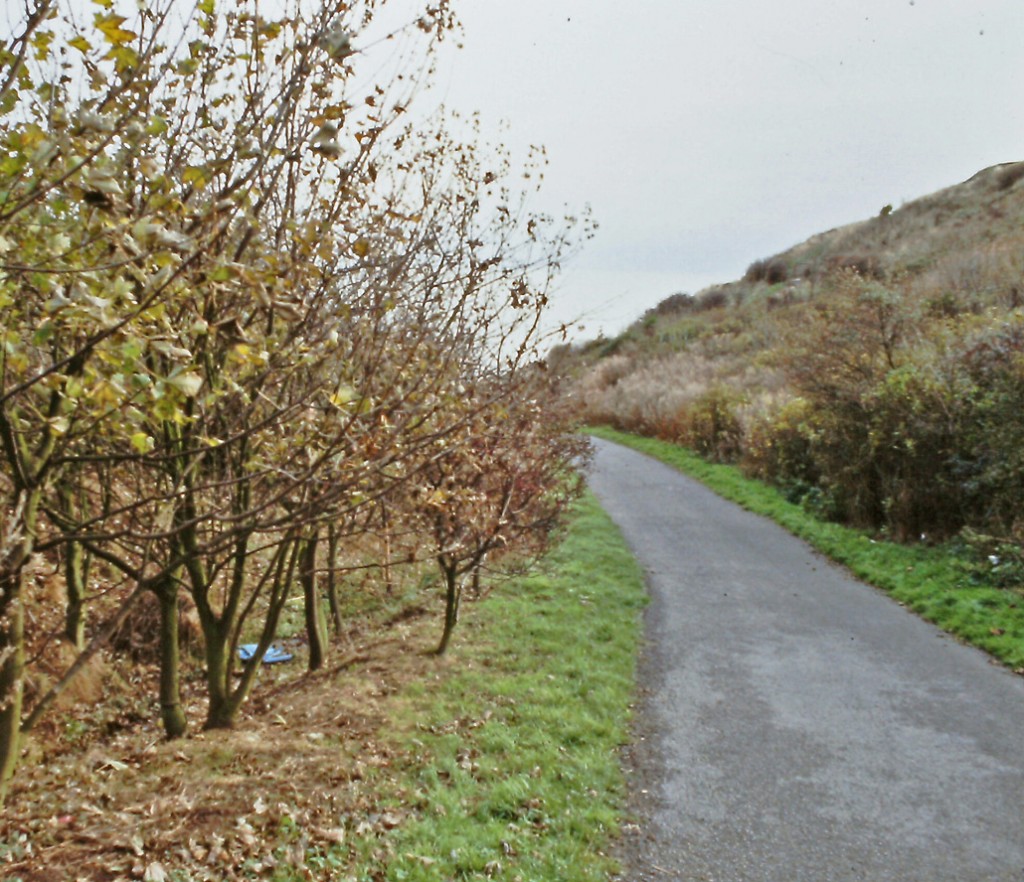
Arndale in 1991 – a little easier to find birds in those days...
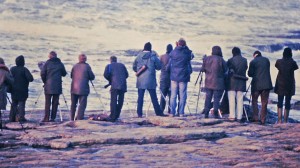
The White-billed Diver twitch on the Brigg, 1987.
Birdwatchers visited the Brigg on day-trips or on holidays to the seaside towns of Filey and Scarborough during the summer and autumn, but no-one recorded there throughout the year until the late 1940s when H. J. R. Pease kept regular watch at the site and noted many birds which, up until then, had never been associated with the Brigg. In 1948 A. J. Wallis’s name appeared in Yorkshire Naturalists’ Union bird reports alongside Filey records and he was the most regular recorder of the bird life until R. H Appleby was introduced to the area in 1952.
Before the creation of the North Cliff Country Park in the early 1970s, the area above and inland from Filey Brigg was farmland and was not developed in any commercial way. An account of Filey Brigg by Ron Appleby, in The Birds of Yorkshire (Mather 1986), described it in the period from 1952 to 1970 as ‘a wild and lonely place’ and spoke of spending whole days there alone.
It is to Ron Appleby that the observatory is particularly indebted for the systematic recording of Filey birds. He mentions a log book started in 1960, with a list of 194 species recorded over the next fifteen years, including Shore Lark, Lapland Bunting, Red-necked Grebe and Slavonian Grebe. With a prophetic hint of things to come, he also speaks of using the hut on the Brigg, kindly made available by the lessee, for sea-watching in bad weather. He was joined by F. J. Thompson in 1965 and together they increased the species list for the area. Ron Appleby gives 27 September 1975 as the date of his last regular visit.
It was in September 1976 that the first stirrings of activity took place to lead, that year, to the founding of the Filey Brigg Ornithological Group. As it happened, more birdwatchers were beginning to come to Filey in the early 70’s, some from Scarborough and from York and yet others from the Hull area (who doubtless decided to travel north rather than follow the well-trodden path to Spurn).
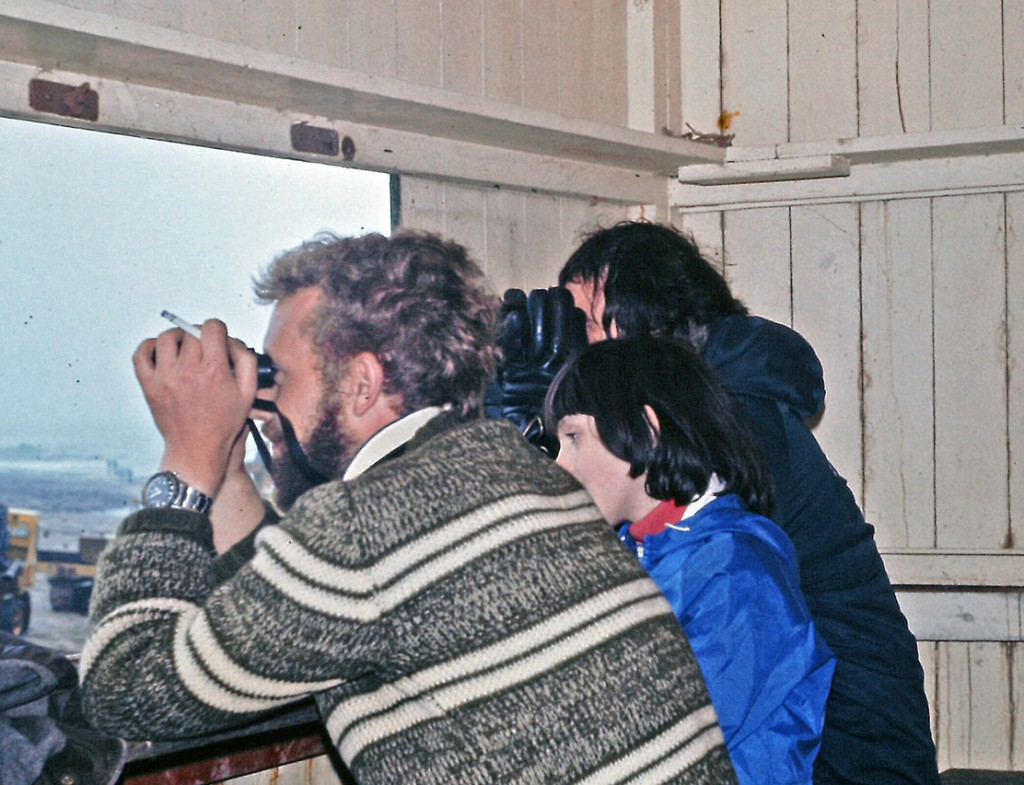
The Brigg hide pre-conversion (and H&S), 1976.
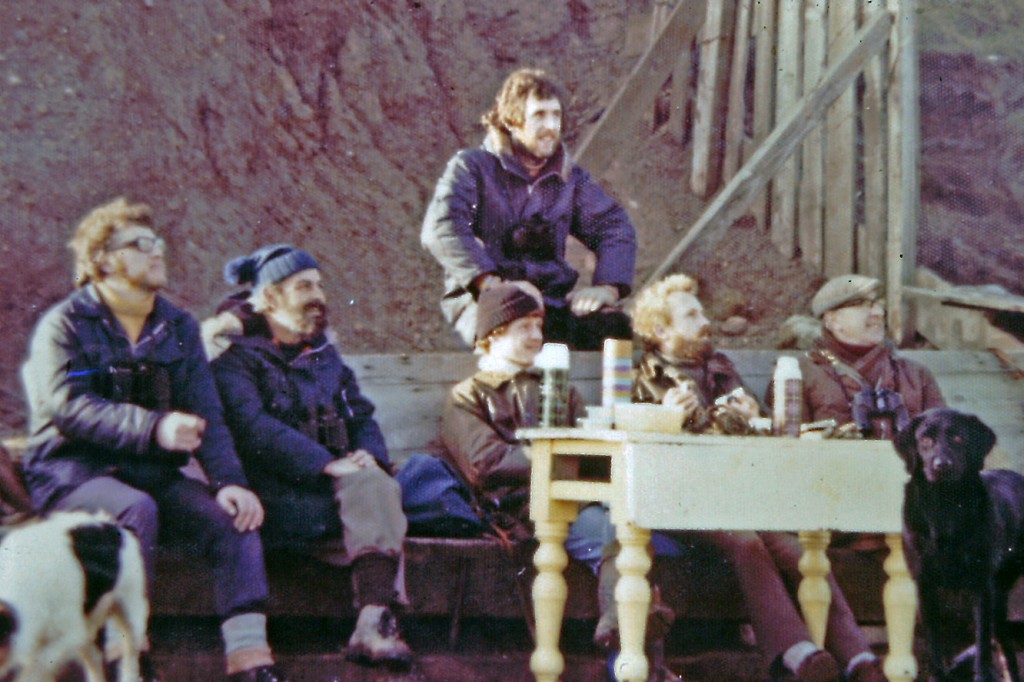
Sea-watching pre-hide, 1975.
All these people would meet more or less informally at the Brigg. In the summer of 1976, having realised in the course of sea-watching that the hut on the Brigg had not been used as a cafe for at least a year, they decided to approach Scarborough Council’s Tourism and Amenities Department to see if they could take it over for use as an observation hide.
Permission was refused. However, the autumn of 1976 was so rewarding in terms of the species recorded (including 54 Sooty Shearwaters in three hours, and Wryneck, Bluethroat, Barred Warbler and Greenish Warbler) that they decided to try again and were successful. The hut was taken over by the recently formed FBOG on 1 August 1977 and Andy Paterson kept the first log of birds recorded by the group.
An observatory-style recording regime has operated at Filey since the formation of the Filey Brigg Ornithological Group (FBOG) in late 1976. It was in January 1999 that Filey became an accredited bird observatory, operated by the group under the umbrella of the Bird Observatories Council. The original full title was Filey Brigg Ornithological Group and Bird Observatory, but it is decided to amend this so we could keep the abbreviation FBOG to, Filey Bird Observatory & Group.
FBOG originally recorded the birdlife found in a defined area to the north of Filey Town which was expanded in 1981 to cover the ten kilometre square TA18, in order to take part more usefully in national surveys organised by the BTO. Exploration of the additional area led to the discovery of Filey Dams, a summer-meadow grazed by the local dairy herd and susceptible to flooding in the winter. The subsequent acquisition of this land was an important milestone in FBOG history.
A major setback which interrupted the steady progress of FBOG came in the form of a catastrophic storm on the night of 7th December 1990.
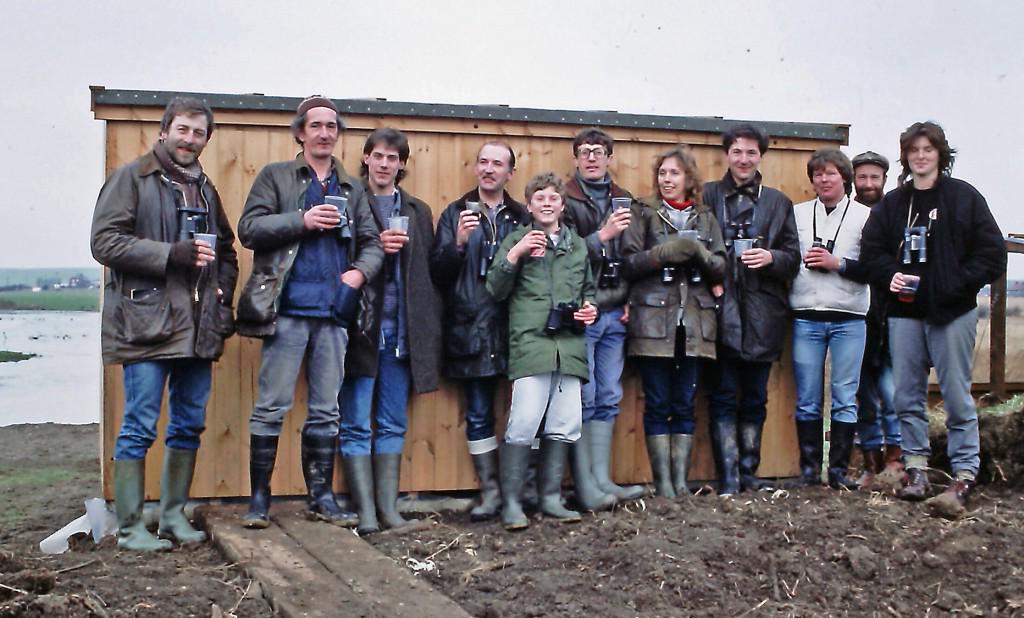
Celebrating the building of the Dams main hide, 1986.
Early the following morning, the sea-watch hide, the ex-café which had stood at the base of the Brigg since 1941, was spotted briefly floating in the bay, causing one fisherman to question wryly whether the bird-watching group had planning permission to move it out there. Then it was washed into the bay corner and smashed to pieces on the rocks. (A separate article detailing the building of the replacement sea-watching hide will appear on the website soon.)
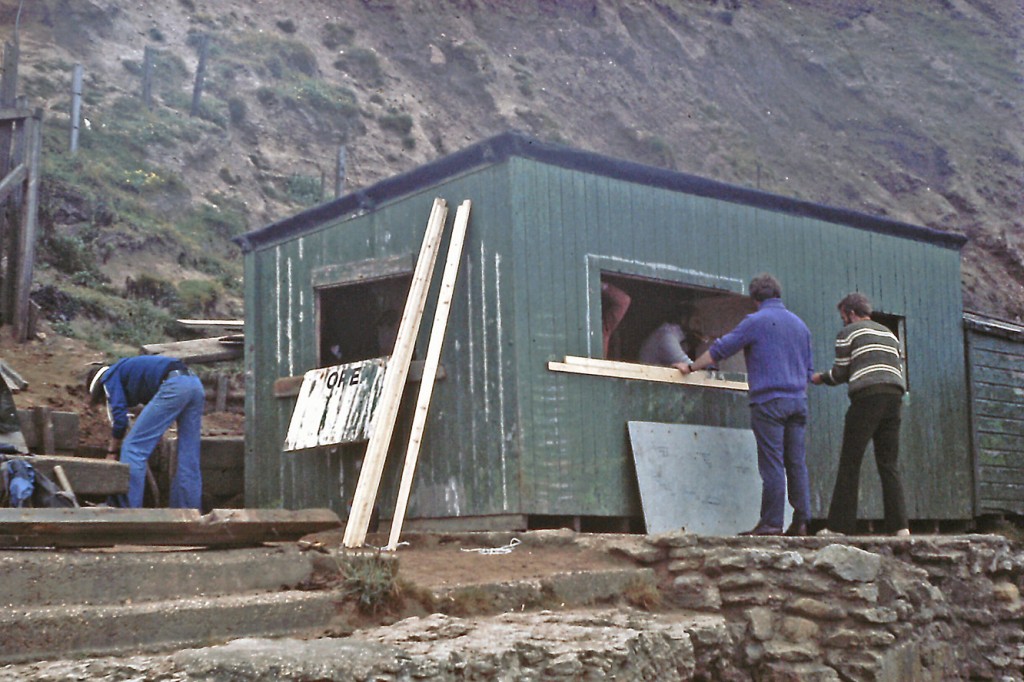
Converting the cafe into the original seawatch hide 1976.
During the life of FBOG we have witnessed many habitat changes, some which we’ve been able to positively influence, such at as The Dams, East Lea, Parish Wood, The Tip and The Rocket Pole Field. Some of the more surprising changes have been around the Country Park. When first created by Filey Council back in the early 70’s, much of the old hedging of primarily hawthorn was supplemented with the planting of trees and shrubs to form wind breaks for the park. This can be seen in some old slide copies from the early 1980’s where Arndale still has large open areas and Long Lane has only started to develop.
Today these areas are badly in need of management work to thin out the canopy to allow woodland glade and understory habitat to flourish. Progress has been slow, but small steps have been made.
Membership of the Group had risen to almost the hundred mark by 2006, and the group’s recent land ownership and increased management responsibilities prompted FBOG to look at becoming a Limited Company. On the 12th January 2007 we were incorporated into a Company Limited by Guarantee.
Membership now stands at over 120, our reserves are in fine fettle, dedicated bird study and wildlife recording are at the forefront of our work, the bird report is going from strength to strength, and FBOG is flourishing in a challenging era.
Photos and text contributed by Peter Dunn
References: The Birds of Yorkshire (1986). John R Mather. Helm.
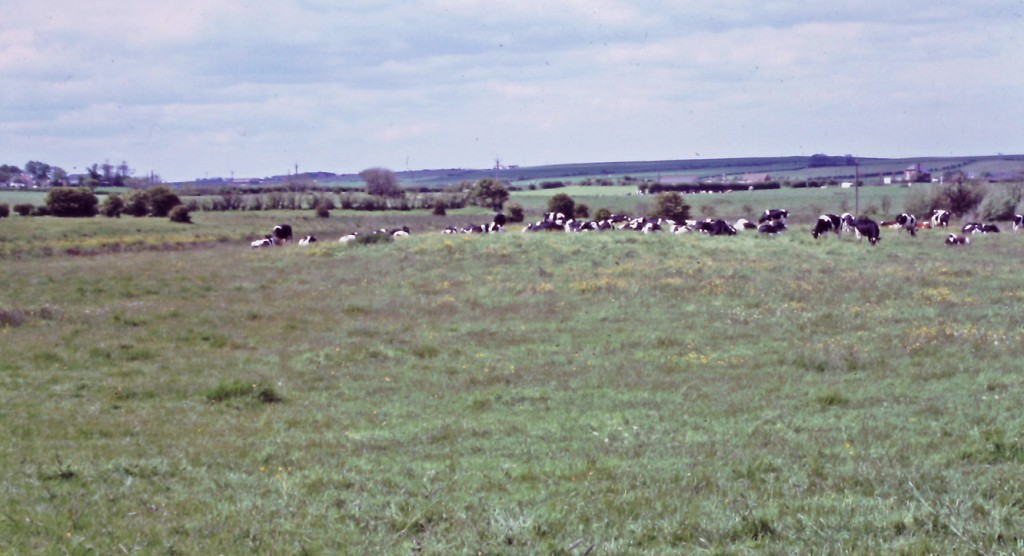
The Dams, pre-reserve, 1981.
